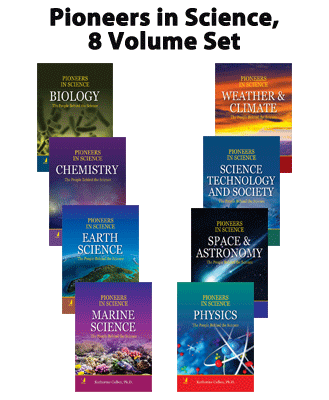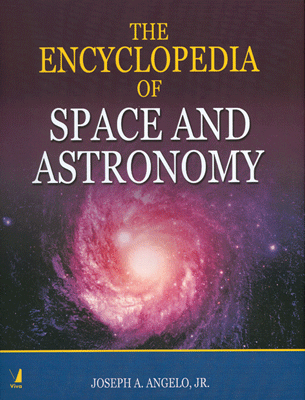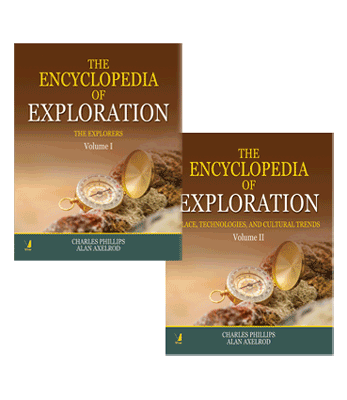
Global Warming, 7 Vol Set
Global Warming, 7 Vol Set
₹15,295.50 ₹16,995.00 Save: ₹1,699.50 (10%)
Go to cartISBN: 9788130915845
Bind: Hardbound
Year: 2014
Pages: 1816
Size: 152 x 228 mm
Publisher: Facts On File Inc.
Published in India by: Viva Books
Exclusive Distributors: Viva Books
Sales Territory: India, Nepal, Pakistan, Bangladesh, Sri Lanka
Description:
Global warming and its threats are real. As scientists unlock the mysteries of the past and analyze today's contributing activities, they warn that future generations may be in jeopardy. There is overwhelming evidence that human activities are changing the world's climate. For thousands of years, the Earth's atmosphere has changed very little; but today, there are problems in keeping this balance. Because people burn fossil fuels to heat their homes, run their cars, produce electricity, and manufacture products, more greenhouse gases are added to the atmosphere at an alarming rate.
The full-color Viva-Facts On File Global Warming set explores the concept that each person is a member of a global family, and as such, we all share a responsibility in fixing the problem. This timely seven-volume set covers all of the important climatic issues that need to be addressed in order to understand the problem—from fossil fuels and pollution to changing ecosystems. Aimed at scientists, scholars and students, this set builds a solid foundation of knowledge to help readers solve critical issues in effective ways.
Volume 1: CHANGING ECOSYSTEMS: Effects of Global Warming
Global warming has increased dramatically during the last century at an unnatural rate, which makes specialists believe that humans contribute to the real cause of global warming today. Many activities humans are involved in—from burning fossil fuels for energy to massive deforestation—are contributing to the atmospheric warming at an alarming rate. Experts believe that in the future humanly induced damage will cause severe problems in the distribution of species and their critical habitats, increase the occurrence of severe weather and droughts, contribute to rising sea levels, and trigger a host of health and quality-of-life impacts that will affect everyone on Earth. Unfortunately, no ecosystem will escape the impact of human-induced global warming.
Changing Ecosystems looks at this serious issue and the far-reaching effects it is having right now, and will have in the future, on every ecosystem on Earth. It is crucial that readers understand the relevant issues now so they can prevent this problem before it is too late and many species and habitats are gone forever. By discussing the effects of global warming on ecosystems, this new volume enlightens students on the many ways they can become more eco-responsible now and in the future.
Contents:
Preface • Acknowledgments • Introduction • Signs and Effects of Global Warming • The Effects of Global Warming on Ecosystems • Scientific Findings • Observed and Expected Effects on Ecosystems • Why a Few Degrees Matter • Results of Global Warming on Ecosystems • Ecosystems, Adaptation, and Extinction • Biodiversity and Ecosystems • The Effects of Climate Change on Ecosystems • Impacts, Vulnerability, and Adaptation • Preservation Issues • The Impacts of Land-Use and Land-Cover Change • Impacts to Forests • Temperate Forests • Birds, Gardens, and Global Warming • Katrina and the Carbon Balance • Boreal Forests • Tropical Forests • Adaptation • Impacts to Rangelands, Grasslands, and Prairies • The Importance of Grasslands • Impacts of Global Warming • Some Surprises • Grasslands around the World • Adaptation • Impacts on Polar Ecosystems • Arctic Ecosystems • Arctic Impacts • The Bear Facts • The Threatened and Endangered Species Act • TESS • Permafrost • Shifting Vegetation Zones • Antarctic Ecosystems • Wildlife • Adaptation • Impacts to Desert Ecosystems • Desert Habitats • Drought • Threatened Deserts • Desertification • The Straight Facts about Desertification • Heat Waves • Wildfires • Southern California on Fire • Impacts to Mountain Ecosystems • Mountain Ecosystems in Danger Worldwide • Lack of Water Storage • Glaciers and Flooding • A Species Threatened: The Rocky Mountain Pika • Challenges in Alpine Regions • Economic Challenges • Case Study—White Mountains, New England • Major Cities Target Global Warming • Impacts to Marine Ecosystems • Temperate Marine Environments • Tropical Marine Environments • Freshwater Environments • Why Estuaries Are Important to the Environment • Conclusions—Where to Go from Here • Adaptation • Conclusions Drawn/Lessons Learned • Ways to Help • Chronology • Glossary • Further Resources • Index
Volume 2: CLIMATE MANAGEMENT: Solving the Problem
Whether people argue that global warming is caused by natural phenomenon or that it is caused by humans—or both—it is one of the most controversial topics in the scientific world today. There are varying opinions between scientists about the effects of global warming because so many interrelated factors are involved, making it difficult to pinpoint specific impacts and make changes accordingly. The Earth's climate is an extremely complicated system, and climatologists must conduct research daily in order to improve their understanding of all the interrelated components.
Climate Management focuses on changing human behavior as the first step toward a positive management system that will benefit current society and those to come. This new full-color resource explores human psychology and how cultural value systems, politics, and news dissemination affect people's opinions, thereby driving public response. Informing readers on how global warming affects national security and terrorism and why its progression is a very real threat to everyone's future, this accessible resource presents various conservation programs that have been developed and looks at what is and isn-t working. Climate Management also outlines the importance of public education and the role it plays in the future.
Contents:
Preface • Acknowledgments • Introduction • The Beginning of Global Warming Management • The Human Link • The United Nations Framework Convention on Climate Change and the Kyoto Protocol • The Impacts of Warming in the United States and Canada • The U.S. Response and International Reactions • The Intergovernmental Panel on Climate Change • IPCC Reports • The U.S. Political Arena • The Current Political Climate • President Obama and His Outlook on Global Warming • National Security and Terrorism • Current Legislation • Cap and Trade and Other Mitigation Strategies • Cap and Trade • State Mitigation Projects • Economics of Mitigation • The International Political Arena • An Expert's Warning • The Evolution of International Cooperation • The Role of International Organizations • The Progress of Individual Countries • Global Warming, Human Psychology, and the Media • Human Psychology and Cultural Values • The Power of the Media • Keeping a Journalistic Balance • Scientists- Mindsets and Data Change • The Stand on the Debate • Understanding Modern Climate • The Far Right—Skeptics of Global Warming • The Middle Ground • The Far Left—Believers in Global Warming • Green Energy and Global Warming Research • The Environmental Benefits of Green Energy • Solar Energy • New Ways to Store Solar Energy • Geothermal Energy • Wind Energy • Hydropower • Energy from Biomass • Biofuel Crop Bans in Europe • Ocean Energy • Global Warming Research • Climate Modeling • The Modeling Challenge—A Brief History • Fundamentals of Climate Modeling • Watching Earth's Climate Change in the Classroom • Modeling Uncertainties and Challenges • Practical Solutions That Work—Getting Everyone Involved • Taking Action • Practical Solutions to Global Warming • The 2007 Nobel Peace Prize • Suggested Solutions That Are Not So Practical • Prioritizing Adaptation Strategies • Simple Activities Everyone Can Do • The Future: What Lies Ahead • A Look toward the Future • Winners and Losers • New Technologies • The Final Choice • Chronology • Glossary • Further Resources • Index
Volume 3: CLIMATE SYSTEMS: Interactive Forces of Global Warming
...useful in a high school library. Recommended.
— Library Media Connection
...helpful...does a good job of explaining the basic science behind the controversy.
— School Library Journal
Many scientists today refer to the phenomenon of -global warming- as -climate change- because they feel it is a better overall description of the situation. While it is certainly true that the atmosphere is warming up, that is only one part of the problem. As the Earth's atmosphere continues to warm, glaciers and ice caps are melting, the sea level is rising, seasons are shifting, and storms are becoming more intense. Some ecosystems are shifting where they still can; others are beginning to fail. In short, humans are changing the Earth's climate—and not for the better.
Climate Systems gives students the basic scientific framework needed to understand how climate systems work and what global warming involves. Outlining the concepts of global systems, climate cycles, and the atmosphere's structure, this full-color book discusses the local motions in the atmosphere that affect weather and climate—from regional and local wind systems to extreme weather and emergency preparedness. This informative volume also examines various countries and how they contribute to the problem as well as strategies for coping with global climate change, current research, and what lies ahead.
Contents:
Preface • Acknowledgments • Introduction • Elements of the Climate System • Climate and Weather • Federal Agencies Studying Climate • The Concept of a Global System • Climate Variability and Cycles • What Exactly Is Global Warming- • Global Warming: Myths and Facts • The Atmosphere's Structure • The Greenhouse Effect and Global Warming • The Mauna Loa Observatory • The Carbon Cycle and Its Links to Other Major Cycles • Biogeochemical Cycles • The Carbon Cycle—Natural v. Human Amplification • The Hydrologic Cycle • The Relationships between the Land, the Oceans, and the Atmosphere • Carbon Sinks and Sequestration • Plate Tectonics: Climate and Movement of the Earth's Continents • The Theory of Continental Drift • The Force That Drives the Tectonic Plates • Plate Tectonics and Global Warming • The Flow of Energy • Solar Energy • Ozone and Climate Change • The Earth's Energy • Atmospheric Energy • Global Energy Balance • Rates of Change • Planetary and Global Motions in the Atmosphere That Affect Climate • Orbital Variations • The Earth's Rotation and the Coriolis Force • Large-scale Features of the Atmospheric Winds • Gustave-Gaspard Coriolis (1792-1843) • Discovery of the Trade Winds • Global Warming and Atmospheric Circulation • The Origin of El Ni--o's Name • El Ni--o • Local Motions in the Atmosphere That Affect Weather and Climate • Regional Wind Systems • Local Wind Systems • A Storm with Many Names • Extreme Weather • NASA's Extratropical Storm Tracks Atlas • Ocean Currents • Ocean Circulation • The Roles of Variable Seawater Density, Temperature, and Salinity • The Intertropical Convergence Zone • The Pacific Decadal Oscillation • The North Atlantic Oscillation • The Great Ocean Conveyor Belt • The Consequences of Destabilization—Abrupt Climate Change • The Global Warming Issue • Early Studies of Global Warming and Scientific Response • Svante Arrhenius (1859-1927): Swedish Chemist • Scientific Viewpoints and Scale • Advances in Technology and Education • The Growth of Environmental Awareness • Public and Media Response • The Big Picture • Climate Forcing—Positive and Negative Feedback • Scientific Inquiry and the Limits of Technology • The Intergovernmental Panel on Climate Change (IPCC) • What Scientists Know, Speculate, and Do Not Know about Global Warming • What Lies Ahead • Conclusions and a Glance into the Future • An Overwhelming Consensus • Who Are the Major Contributors- • What the Experts Say • Coping with Global Climate Change—Adaptation • Research and Learning—Looking Ahead • Facts about Climate Change • Chronology • Glossary • Further Resources • Index
Volume 4: FOSSIL FUELS AND POLLUTION: The Future of Air Quality
...Valuable...
— School Library Journal
Clean air is essential to life and good health. Several important pollutants are produced by fossil fuel combustion and emitted directly into the atmosphere, including carbon monoxide, nitrogen oxides, sulfur oxides, and hydrocarbons. In addition, total suspended particulates contribute to air pollution, and nitrogen oxides and hydrocarbons combine in the atmosphere to form tropospheric ozone, the major constituent of smog.
With an examination of fossil fuels as energy sources and the world population's reliance on them, Fossil Fuels and Pollution outlines the connection between fossil fuels and global warming. This new full-color book explores the properties of greenhouse gases, the nature and causes of their emissions, the largest contributors, and important health issues and considerations associated with them. The concepts of energy efficiency and fuel economy are also examined as well as agricultural greenhouse gases and pollution. Fossil Fuels and Pollution ends with a close look at fuel technology and the -green technology- movement that has been put into place for tomorrow's cars.
Contents:
Preface • Acknowledgments • Introduction • Energy, Fossil Fuels, and Global Warming • Energy Sources—Fossil Fuels • Measuring Energy • Fossil Fuels and Global Warming • Global Energy Use • Greenhouse Gases, Health, and the Environment • Greenhouse Gases • Global Warming Potential • Greenhouse Emissions and the Biggest Contributors • The State of the Union in Total Greenhouse Gas Emissions • Health Issues Associated with Global Warming • Emissions and Oil: Quick Facts • Evolution since the Industrial Revolution • The Industrial Revolution • Donora, Pennsylvania, Smog, 1948 • The Great London Smog • Acid Rain • The Clean Air Acts • Coal Plant Pollution • Modernization and Global Warming • Environmental Time Line • The Green Industrial Revolution • Global Warming and Pollution: Buildings and Homes • Green Buildings • Increased Productivity—Real-Life Examples • Energy Efficiency • Operation Change Out: the Military Challenge • Green Homes • The ENERGY STAR-- Program • Global Warming and Pollution: Green Transportation • Energy Efficiency • Fuel Economy • Contributors to Global Warming and Pollution • New Technology • In the News—the Top Environmentally Friendly Cars • Global Warming and Pollution: Cities and Industry • Global Warming and Cities • Global Warming and Industry • Industry Arguments against Global Warming Action and Why They Are Wrong • The Other Global Warming—a Look into the Future • Global Warming: Agriculture Today • Agricultural Greenhouse Gases and Pollution • Renewable Energy Generation • In the News—What Is Happening Today • Making a Difference: Solutions to the Problem • Fuel Technology • Biofuels and Clean Vehicles • Alternative and Advanced Fuels • New Fuel Technology • Green Technology: Tomorrow's Cars Today • Driving into the Future • Hybrids • Electric Vehicles • Flexible Fuel Vehicles • Fuel Cells • Plug-in Vehicles • Air-Powered Vehicles • Cars of the Future • Conclusions—the Future of Air Quality • Is It Too Late- • The Future of Air Pollution and Climate Change • Health and Environmental Impacts • Public Awareness as a Foundation • The Future of Air Quality Management • What Happens Next- • Appendixes • Distribution of Total U.S. Greenhouse Gas Emissions by End-Use Sector, 2007 • U.S. Emissions of Greenhouse Gases, Based on Global Warming Potential, 1990, 1995, and 2000-2007 • World Energy-Related Carbon Dioxide Emissions by Region, 1990-2030
• Chronology • Glossary • Further Resources • Index
Volume 5: GLOBAL WARMING CYCLES: Ice Ages and Glacial Retreat
Earth has always exhibited patterns of heating up and cooling down. At some points in time, many areas of Earth were shrouded in blankets of ice, with ice caps and glaciers dominating the landscape. Certain areas on Earth have been covered with prominent glaciers multiple times in the past for millions of years. Since the last ice age, which ended just over 10,000 years ago, the Earth's climate has been relatively stable, with just a few fluctuations; at least until the beginning of the Industrial Revolution in the 1700s, when the climate began to increase in temperature.
Global Warming Cycles focuses on the mechanisms that caused past climate changes, putting the Earth repeatedly into and out of ice ages. It compares natural cycles with today's rapid global warming, caused principally by the behavior of humans. This timely new volume presents the many physical factors that shape the Earth's climate, examining the ones that are out of our control as well as the ones that humans have a direct impact on. It also looks at how scientists use landform clues from the past to assess global warming and how they apply that knowledge to the future to help prepare current and future society for what is to come.
Contents:
Preface • Acknowledgments • Introduction • Ice Ages • Ice Ages—What They Are and Why They Occur • Sources of Information • Climate Cycles • Prominent Cooling Events • The Hockey Stick Theory • Will There Be Another Ice Age- • Changes Today Because of Warmer Temperatures • The Phenomenon Called Global Dimming • Glacial Retreat and Meltdown • Glacial Morphology • Past Glacial Evidence • How Ice Melts • How Glaciers Reflect Climate Change • Evidence of Global Warming • Glacial Retreat • Impacts of Glacial Retreat • Computer Modeling Applications • The Cryosphere and Isostasy • The Water Cycle—The Earth's Water Stored in Ice and Snow • Ice Shelves and Ice Sheets • Cryospheric Facts • Ice Caps • Glacial Isostasy • Ocean Currents and Climate • Understanding the Role of Oceans in Regulating Climate • The Role of Oceans in Climate Change • Cyclic Ocean Circulation That Influences Climate • Rising Sea Levels • Sea-Level Rise • Measuring Sea Level • A Historical Perspective • Variations in Sea Level • Effects of Sea-Level Rise • Future Projections • Abrupt Climate Change • Abrupt Changes in Climate • Evidence of Past Abrupt Climate Change • Causes of Abrupt Climate Change • Using Paleo Evidence to Predict the Future • Warning Signs Today • Global Warming as a Trigger • The Day after Tomorrow • Misconceptions about Abrupt Climate Change • Tropical Cyclones and Other Severe Weather • Hurricanes and Global Warming • Storm Surge Prediction and Simulation • How Hurricanes Are Named • Global Warming and the Hurricanes of 2004-2005 • Cyclic Theory • Hurricanes of the Past • Hurricane Katrina and Global Warming • The Costliest U.S. Hurricanes • Hurricane Research • Tornado and Thunderstorm Research • The Ten Worst Places for an Extreme Hurricane to Strike • Climate Research—What the Experts Say • Tracking the Ocean's Circulation • CO2 Sequestration • Large-scale Salinity Changes • Locating 64--F Water • Atlantic Freshwater • Southern Ocean Currents • Trade Wind Changes • Past Warmer Oceans • Breaking the Temperature Record • Arctic Melt • Conclusions and a Glance into the Future • Water Resources • Sea-Level Rise • Research • Chronology • Glossary • Further Resources • Index
Volume 6: GLOBAL WARMING TRENDS: Ecological Footprints
Climate scientists have repeatedly told us that the 1990s had the warmest temperatures ever recorded since records were consistently kept in the mid-1800s. Scientists worldwide support this notion, and there is an abundance of data collected to prove its validity. Some argue that the trend has not been a steady upward climb and that it has had intermittent cooling periods. Although these intervals have occurred every few decades in some locations, the overall tendency has been a steady upward climb, coinciding with melting glaciers, rising sea levels, shifting climatic zones, and changing ecosystems worldwide.
Global Warming Trends presents an overview of significant climatic periods of the Earth's past and introduces the concept of climate proxies, or natural indicators that can be used to infer past climate. This accessible new book discusses the concept of geochronology and how scientists determine the relative ages of objects on Earth. It also examines how scientists use pollen, tree rings, plant remains, and other life forms to make inferences about past climatic conditions. Global Warming Trends concludes with the most current information from climate experts, exploring the futuristic role of computer modeling and how it is helping scientists discover the past in order to predict the future.
Contents:
Preface • Acknowledgments • Introduction • The Science of Paleoclimatology • The Purpose of Paleoclimatology • What Prehistoric Change Reveals about the Future • Rate of Change • Climate Patterns • Key Climate Intervals in the Earth's Past • The Earth's Geologic Past • Ancient Climates—2 Million to 4.6 Billion Years Ago • Evidence for Snowball Earth • The Pleistocene Climates—10,000 Years to 2 Million Years Ago • The Holocene/Recent Climates—10,000 Years Ago to Present • Climate Time Line at a Glance • Key Uncertainties • Geochronology and Climate Proxies • Radiometric Dating Techniques • The Discovery and Use of Radioactive Decay • Nonradiogenic Dating Methods • Climate Reconstruction Resolution • Climate Proxies • Proxy Data: Geomorphic Landforms • Geologic Evidence • Landforms of Arid Environments • Landforms of Cold Environments • Geological and Geochemical Proxy Data • Soils and Mineralogy Composition • Sediments • Ice Cores • Loess • Cave Environments • Biotic Proxies • Life-forms/Fossils • Dendrochronology • A. E. Douglass (1867-1962): The Birth of Dendrochronology • Coral • Vegetation • Climate Change and Past Civilizations • The Rise of Civilization • Central and North America • Middle East, Far East, and Europe • Adaptations Today • Using New Technology to Discover the Past • The Science of Remote Sensing • The Science of Geographic Information Systems • What the Experts Say • Modeling Abrupt Climate Change • Mineral Clues to Past Climate • The Stories Marshes Tell • World Warmth Edging Ancient Levels • Conclusions and a Glance into the Future • Modeling the Earth's Climate • What Some Models Say about North America • Pangaea Ultima—the Future- • The Geological Timescale • The Periodic Table of the Elements • Chronology • Glossary • Further Resources • Index
Volume 7: GREENHOUSE GASES: Worldwide Impacts
While there are several factors that contribute to global warming, such as natural changes in the Earth's inclination and revolution around the sun, by far the biggest factor is the emission of greenhouse gases. Carbon dioxide, methane, ozone, chlorofluorocarbons, water vapor, and nitrous oxide are added at alarming rates to the atmosphere by daily human activity. Every person on Earth has a -carbon footprint—-a measure of greenhouse gas contributed to the atmosphere on a daily basis. Some people's footprints are much higher than others; for instance, those that live in developed countries such as the United States (the largest greenhouse gas emitter), emit much greater amounts than those living in undeveloped countries of the world. Various activities, such as agricultural and deforestation practices, also emit greenhouse gases.
Greenhouse Gases explores the very important role these gases play and their global impact on populations and ecosystems worldwide. The goal of this book is to provide readers with an understanding of the various sources of these gases, their interaction with the atmosphere, their effect on natural systems, and why controlling them is critical to the Earth's future climate. Other issues discussed in this new, full-color book include the role of the ozone and a newly discovered concept called -global dimming- and how it relates to global warming.
Contents:
Preface • Acknowledgments • Introduction • The Greenhouse Effect and Global Warming • Discovery of the Greenhouse Effect • Fourier, Arrhenius, and Callendar: Pioneers of Global Warming • The Greenhouse Effect • Greenhouse Gases • Global Warming Potential • The Role of Ozone • Global Dimming • Carbon Sequestration • The Earth's Carbon Cycle • Sinks and Sources • Types of Carbon Sequestration • The Carbon Conundrum • Modeling Carbon Emissions in the United States • Agriculture and Greenhouse Gases • The Effects of Global Warming on Agriculture • The Response of Agriculture to Climate Change • Acres of Opportunity—Greenhouse Gas Mitigation and Biofuels • Agriculture and Food Supply • Deforestation and Greenhouse Gases • Forests- Role in Climate Change • Carbon Sinks • Impacts of Deforestation • Rain Forest Facts • Climate Change Impacts • After Deforestation and the Future • Anthropogenic Causes and Effects • Carbon Footprints • Calculating Your Carbon Footprint • Land Use Change • Public Lands • Cities at Risk • Areas Most at Risk • Climate Solutions for Cities • Cultural Losses • Economic Impacts • The Fate of Natural Refuges • Climate Change Impacts to Nature and Wildlife • The Endangered Species Act • Working Together to Protect Wildlife • The Timing of Seasonal Events • The Myths and Realities About the Endangered Species Act • Wildlife in Peril • Refuges at Risk • The Role of Refuges • Laws in Force to Help Wildlife • Global Warming around the World • Europe, Russia, and Asia • Eyewitness Accounts • Africa and Oceania • The Arctic and Antarctica • South, Central, and North America • Global Warming Effects in the United States • Mitigation and Adaptation to Climate Change • Impacts of Global Warming • Mitigation Strategies—Carbon Capture and Storage • Mitigation—One Step at a Time: Heading in the Right Direction • Adaptation Strategies • Chronology • Appendix: The Top 20 Carbon Dioxide Emitters • Glossary • Further Resources • Index
About the Author:
Julie Kerr Casper, Ph.D., has been an Earth scientist for the United States Bureau of Land Management for more than 30 years. She has a Ph.D. in Earth science from the University of Utah, specializing in satellite remote sensing, interpretation, and mapping of the Earth's natural environment. She is active in various environmental conservation organizations that focus on the healthy stewardship of the Earth's natural resources and has spent considerable time teaching elementary through high school students how to enjoy and take care of the environment.






